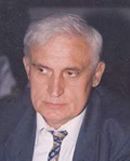|
Plenary
Lecture
Current
Communications Networks Status for Smart Grid

Professor
Zoran Bojkovic
Full Professor of Electrical Engineering
University of Belgrade
Serbia
E-mail: z.bojkovic@yahoo.com
Abstract:
With increasing interest from both the academic and
industrial communities, this work is planned to keep the
communities up to date about the developments in
communication technology in the smart grid.
Smart grid can be defined as an electric system that
uses information two-way cyber-secure communication
technologies and computational intelligence in an
integrated fashion across the entire spectrum of the
energy system from the generation to the end points of
consumption of the electricity. Some of the key
requirements of the smart grid from the aspects of
global multimedia communication include: integration of
renewable energy resources, active customer
participation to enable energy conservation, secure
communications, better utilization of existing assets to
address long term sustainability, management of
distributed generation and information storage,
integration of communication and control across the
information system to provide interoperability and open
systems as well as to increase safety and operational
flexibility. Three fundamental functionalities are
desirable for the communication infrastructure of the
smart grid : sensing, transmission, and control. Embeded
sensing is carried out by a large number of smart meters
or sensors to detect the states of the various points of
the grid in a real-time manner. Two-way transmission
links should be established for data transport between
sensors and control centers. Control instructions are
delivered from the smart meters or sensors located in
different places to support efficient operations of the
smart grid and reliable access to grid components. To
fulfill these purposes, the smart grid infrastructure
has to integrate enabling networking technologies. The
communication infrastructure of the smart grid has to
cover the entire region with the intention to connect a
large set of nodes. Thus, the communication
infrastructure is envisioned to be a multilayer
structure that extends across the whole smart grid from
the home area to the neighborhood area and the wide
area. Home area networks ( HANs ) communicate with
various smart devices to provide energy efficient
management and demand response. Neighborhood area
networks ( NANs ) connect multiple HANs to local access
points. Wide area networks ( WANs ) provide
communication links between the NANs and the utility
systems to transfer information. This three-layered
structure of the communications networks provides a
potential operation of the smart grid to work
economically,efficiently, reliably and securely. The
design of the communication network associated with the
smart grid involves detailed analysis of its
communication requirements, a proposal of the
appropriate protocol architecture, the choice of the
most suitable technologies for each case study, and a
scheme for the resultant heterogeneous network
management system.
This work presents key issues to current communications
networks status for smart grid. At first, te focus is on
components and communication requirements. The main
component of the smart grid is the sensor network with a
system of distributed sensor nodes that interact among
themselves with processing and routing capabilities
using either wireless or wired medium. Smart grid
networks will manage real-time information and will
collect information from established intelligent
electronic devices for control and automation process.
In the second part, issues related to smart grid
communication architecture will be discussed. Next, mesh
network architecture using IEEE802.11s as its core
technology is described. Finally, the mesh routing on a
hybrid tree-based routing protocol in a multiple gateway
environment, will be performed. Further research issues
conclude this presentation.
Brief Biography of the Speaker:
Prof. Dr. Zoran Bojkovic (http://www.zoranbojkovic.com)
is a Full Professor of Electrical Engeenering at the
University of Belgrade, Serbia, and a permanent visiting
professor at the University of Texas at Arlington, TX,
USA, EE Department, Multimedia System Lab. He was a
visiting professor in more than 20 Universities
worldwide and has taught a number of courses in the
field of digital signal processing, computer networks
and multimedia communications. Prof. Bojkovic is the
co-author of 6 international books/monographies
(Publishers: Prentice-Hall, Wiley, CRC Press, WSEAS
Press, Editura Politechnica). Some of them have been
published in Canada, Japan, China, Singapore, India and
Romania. He is co-editor in 68 International Books and
Conference Proceedings. He has published more than 430
papers in peer-reviewed journals, conference proceedings
and publications. His activities included serving as
Editor-in-Chief in 2 International Journals and
Associate Editor in 3 International Journals. Prof.
Bojkovic was co-chair for more than 10 International
Symposium and Conferences and has served of more than 50
International Symposiums and Conferences. He has
conducted many keynote/plenary lectures,
workshops/tutorials as well as seminars and participated
in many international scientific and industrial prjects.
He has been and is yet a consultant to industry,
research institutes and academia. He is a Senior Member
of IEEE and WSEAS, Member of EURASIP and IASTED, Member
of SERSC, Korea, expert of IAMSET, full member of
Engineering Academy of Serbia and a member of Serbian
Scientific Society.
|
